Chapter
9
Changing
Times for James & Agnes
By the end of 1753, James and Agnes had completed their family. Both of them were 39 years old and Agnes had just
given birth to her last son, Edmund. They were
established property owners in one of the
largest and most influential colonies in North America.
Virginia played a major role in the historical events that were beginning to
unfold. Williamsburg had been chosen as the
capital of the Commonwealth and “it was here that the convention adopted the Virginia
Bill of Rights on June 12, 1776.” (Ref 1026)
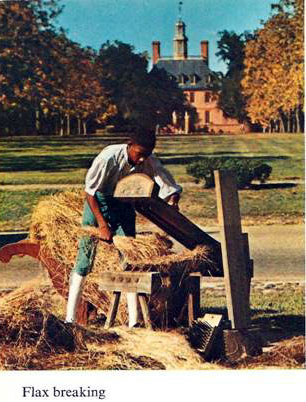
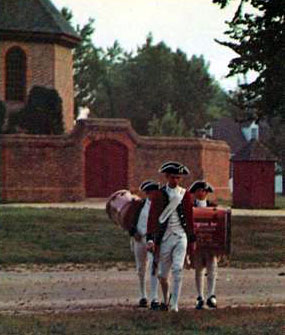
All of the offspring of
James and Agnes were raised as subjects of the King of England. They lived their lives in typical colonial fashion. The love of fine horse flesh, good farmland, and
family honor were as much a part of their DNA as hair color.
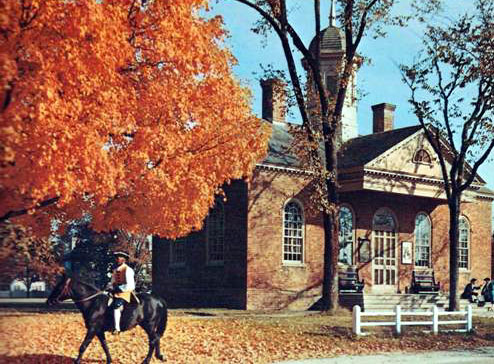
There was a restless wind that was blowing, however.
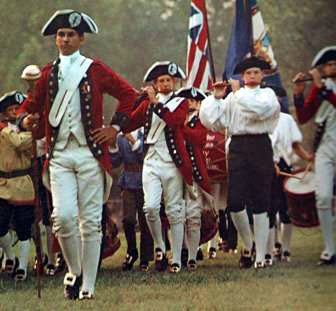
With changes on the horizon, James & Agnes, around the age of 56, began selling some
of their property in Virginia. On May 7,
1770, in Spotsylvania County, the couple “held a land lottery selling 1,000 acres, in
100 acre increments, which were drawn in Ware’s Lottery.” (Ref. 6,379) The Virginia County Deed Book states that one of
those transactions was between “James Ware and Agnes, his wife, of Caroline County to
Ezekiah Mitchell of said county.” (Ref.5) On the same date,
“James Ware and Agnes (his wife of Caroline County) deeded to Nathaniel Hill 100
acres in St. George Parish Spotsylvania County, which land Hill won as a prize in the
Ware’s Lottery.” (ref.978)
Although selling
property in Virginia, they were buying property in Kentucky.
They became aware of dealing with unethical land speculators, however, for
these business transactions were often done long distance. “Many well-to-do merchants
or planters sent out agents to buy lands in Kentucky and these agents either hired the old
pioneers (such as Daniel Boone) to locate and survey the lands or else purchased their
claims from them outright.” (Ref. 867) In one instance, James
ended up having to file a law suit against one such person.
According to a paper written by Theodore Roosevelt in 1889, “William Smith . . . saith that, about the first
of June 1780, being in Kentucky and empowered to purchase land for Mr. James Ware, he
agreed with a certain Simon Kenton of Kentucky for 1000 acres of land about 2 or 3 miles
from the big salt spring on Licking, being told that the land was first rate land and had
a good spring thereon.” (Ref 867) It would seem that
James feared it “would not prove as fertile as Kenton had said” and wanted
further proof of the value of what he was buying. In
a suit he later filed against Mr. Kenton, he noted that “the land, being out in the wilderness & the
purchaser did not know its exact location and when he threatened suit, and asked to be
shown it, Kenton ‘swore that he would not show it at all.’ Letter from James Ware,
November 29, 1789 (Ref 867) James clearly wanted to
know what he was buying and was facing
resistance.
He was right to be careful because this was, indeed, still a wilderness. As stated before, the
land that is now known as Kentucky was originally simply part of Virginia. 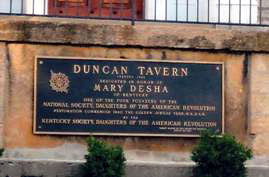
Once the frontier county of Fincastle was dissolved and became Kentucky
County, it was later subdivided into Fayette, Jefferson and Lincoln. Even more divisions took place. On May 1, 1785, Fayette County was divided into two
counties, the northern part being called Bourbon and the southern part keeping the name of
Fayette. In 1788, Woodford County was formed
out of Fayette County. (Ref.864) It was into all of the above counties that so
many of the Ware family moved in the early 1790’s.
Eventually, their home state of Virginia would “become the
‘mother” of the states of Kentucky (1792), Ohio (1803), Indiana (1816), Illinois
(1818), West Virginia (1863), and indirectly Michigan (1848), and even part of Minnesota
(1858).” (Ref.
972) Kentucky was just the beginning.
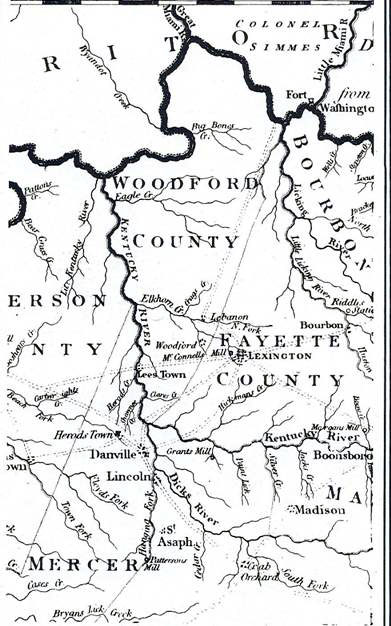
It had land
fertile with opportunities for growth and
development. George
Washington had “crossed the Blue Ridge with a surveying party” in his younger
days and seen the beauty and potential that rested in the frontier lands there. By time of his death in 1799, the Squire of Mount
Vernon owned 45,000 choice acres of western land scattered through the Shenandoah Valley
and the modern states of Kentucky, Ohio, West Virginia, and Pennsylvania.” (Ref. 901) He had predicted that “Americans would move
across the mountains faster than any one would imagine.” (Ref. 901) He was so right!
Kentucky offered the
opportunity for those who had fought in the Revolutionary War to use their land grants,
given as reward for service, as a basis to establish themselves as some of the largest
land owners in the country. Families and
friends moved together as a unit and put down their roots close to each other; often as
immediate neighbors. This offered camaraderie as well as
protection. Since inevitable marriages
resulted from such close proximity to each other, property boundaries soon took on the
appearance of small dynasties; with these vast land holdings ultimately being passed down
from generation to generation.
In addition to the wealth of land ownership, Kentucky offered much in the way of natural
riches. As with most
settlers, the Wares were attracted to the land for “its timber, cane,
pasture grass, fertile soil, and limestone. The
lush green pastures were perfect for the grazing of sheep, cattle, and horses, as well as
the production of corn, tobacco, and hemp.” (Ref 864) We know from several
letters written by James Ware II to his son back in Virginia, who had to return to his
birthplace for health reasons, several family members were raising flax and hemp. The climate seemed perfect for those crops and the
expanding country was in great need of them.
Brief
explanation of the crop Hemp
Brief
explanation of the crop Hemp
 Hemp is the tough, coarse fiber of the cannabis plant, often used
to make rope. It is the oldest cultivated fiber plant in the world. It contains no toxins
as it does not require pesticides. Hemp is the tough, coarse fiber of the cannabis plant, often used
to make rope. It is the oldest cultivated fiber plant in the world. It contains no toxins
as it does not require pesticides.
The first Gutenberg bible was printed on hemp paper. Christopher Columbus' sails and ropes were made
from hemp, and the first drafts of the Declaration of Independence were printed on hemp
paper.
Hemp demands a rich, well-drained soil such as is found in the
Blue Grass region of Kentucky. It must be
loose and rich in organic matter. Soil that
will grow good corn will usually grow hemp. There
is much history about spinning American hemp into rope, yarn or twine in the old Kentucky
River mill at Frankfort, Kentucky. During the
first third of the nineteenth century most of the rope made in Kentucky was spun and
twisted by hand and by the use of horse power at  one end of the walk. one end of the walk.
The following was
written in THE LEXINGTON HERALD-LEADER by
Dick Burdette (written on March 20, 2000)
VERSAILLES, Ky. - Near the east edge of town, along U.S. 60 at
Payne’s Mill Road, there's a bronze marker commemorating the important role hemp once
played in Kentucky agriculture. It isn't unique. There are similar signs in Boyle,
Fayette, Franklin, Jessamine, Madison, Mason, Scott, Shelby and Clark counties.
 Because of its rich soil and mild, ideal
climate, "Woodford County was the hemp seedbed of Kentucky," Gifford said.
"Hemp seed from here was shipped all over the country." Because of its rich soil and mild, ideal
climate, "Woodford County was the hemp seedbed of Kentucky," Gifford said.
"Hemp seed from here was shipped all over the country."
In another article written in the THE WOODFORD SUN (Versailles, Kentucky) June
10, 1999, by Stephen Peterson, it is
stated that “at one time, Woodford County produced more hemp seed than any other
single location in the United States.” In the past, hemp was the source of a vast
array of products from oil to textiles to foodstuffs.
Brief
explanation of the crop Flax
This plant, from which linen is  derived, never rivaled tobacco as a cash crop in the
Chesapeake area, but most farmers and plantation owners grew small amounts well into the
1800's for their own use. Flax is an
“annual” which grows two to three feet high on a slim, little-branching stem. It
is this woody stalk, hollow when dried, which is harvested and ultimately manufactured
into linen. Additional properties of flax
make it a desirable finished product, and even the seeds can be harvested and made into
linseed oil (used in wood treatments.) derived, never rivaled tobacco as a cash crop in the
Chesapeake area, but most farmers and plantation owners grew small amounts well into the
1800's for their own use. Flax is an
“annual” which grows two to three feet high on a slim, little-branching stem. It
is this woody stalk, hollow when dried, which is harvested and ultimately manufactured
into linen. Additional properties of flax
make it a desirable finished product, and even the seeds can be harvested and made into
linseed oil (used in wood treatments.)
The World Book
Encyclopedias ©1953
Flax and hemp were not the only things that grew well in Kentucky. There was also great profit to be made in vegetable
farming and horse breeding. Today the
countryside is still resplendent with these beautiful, rolling farms; surrounded either by
stately stone walls or by miles and miles of perfect fences.
It is easy to see why Kentucky became so well known for the fields of
“bluegrass” that nurture these fine animals.
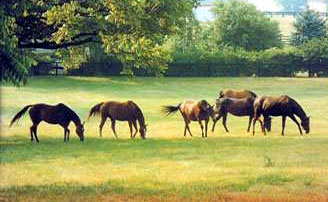
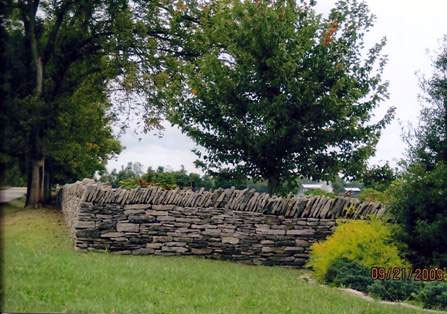
Old stone fence
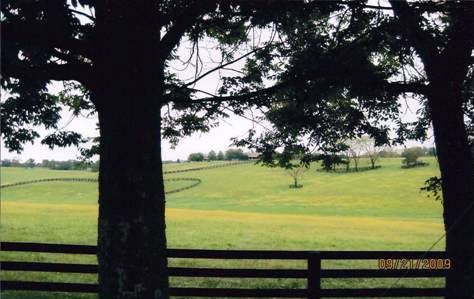
Kentucky
horse ranch
Photos
courtesy of James & Judy Ware 2009
Cornelia
Ware Anker made an interesting observation in transcribing some of her old Ware family
letters from the late 1700’s.
“In reading the old letters, punctuation is
almost nonexistent, with capitals thrown in indiscriminately, but one thing I notice is
that there are three words that are unfailingly capitalized, namely ‘Money’,
‘Interest’ and ‘Horse’. These
old Wares had the greatest respect for ‘Property’ and the love of good horses is
in our blood.” (Ref.
2)
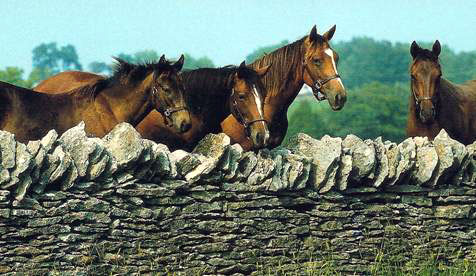
|

